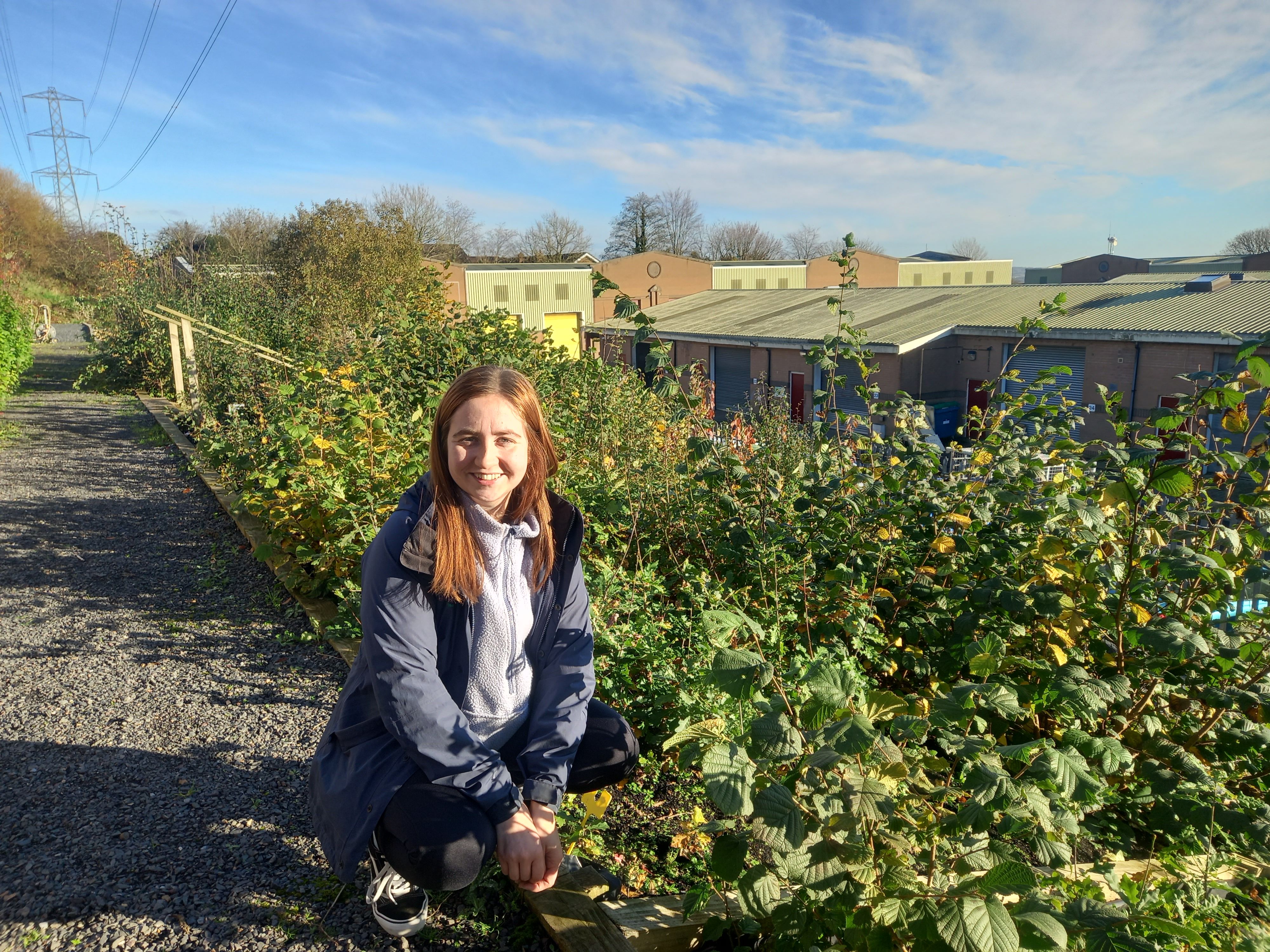IT’S not just on the nightly news that we are seeing the terrible effects of climate change, but right on our doorstep. Just ask conservationist Laura Shiels.
Laura, environmental engagement officer for the Belfast Hills Partnership, says that the biggest problem this year is that they can’t plant the tree saplings as planned this month – because the trees haven’t lost their leaves yet.
“It’s best that trees are dormant for replanting, they have to be ‘asleep’ and we would usually plant from November to March. But if you look at all these wee trees here, every one of them is still in leaf,” she said, showing Dúlra around the 2,500 saplings in the charity’s native tree and wildflower nursery in West Belfast.
“We’ve having to tell people and companies who are waiting for these trees that we can’t provide them yet, they’ll have to wait until late December. Climate change has pushed everything back a month.”
The tree and wildflower nursery has been built on a forgotten slope of land below the Partnership’s Hannahstown office and the incredible thing is that every young tree here comes from seeds found on our hills – collected by expert volunteers during walks.
A tree’s ‘provenance’ is vital in conservation, it’s believed that every Irish native tree has developed local adaptations over thousands of years, making each one particularly suitable to its own local soil and climate. The native trees of the Belfast Hills – what’s left of them – are unique.
At the nursery, each species of tree – from oaks to rowans to willow to oak – are all labelled according to the hill the seed was recovered from. And most of those trees will be replanted on their original hill. It’s an incredible attention to detail that takes years of care, mainly by people who volunteer to help the charity.
Laura herself knows exactly what’s required to do this work, and not just because of her Masters degree in conservation – she was a volunteer with the Belfast Hills Partnership for three years before becoming full-time.
“The volunteers meet twice a week on Mondays and Thursdays and they’re the real shining stars here,” she tells me. “Every week, whatever the weather they come out. They collected all these seeds and carefully tended them for years until they are ready to be returned.
“Some saplings go to schools but most will end up back on the mountain as healthy young trees. We’re collaborating with Belfast City Council to help deliver their One Million Trees project, which aims to plant a million trees across Belfast by 2035.
“We have 2,500 native trees here and about 3,000 in another nursery near Slievenacloy.”
Laura also visits schools to spread the environmental message and the importance of the Belfast Hills, which run from Carnmoney to Lisburn.
“I work with the landowners to enhance the trees on the hills, perhaps helping farmers replace bordering hedges that used to be there.
“In the winter months as well as tree planting we have litter lifts and path clearing, and it’s a good time to cut back invasive species, like Himalayan balsam, laurel and snowberry, which all grow on the hills.
“Summertime is more for bird and bat surveys – and last year was a good one for newts when their numbers went up.”
The one native tree you won’t find in Laura’s nursery is the ash, fuinseog in Irish. The famous tree that provides wood for hurls is being killed off by ash dieback, a mysterious fungal disease that was first reported in Ireland just 10 years ago. Since then, almost every ash across the Belfast hills – including many hundreds in Colin Glen – has died or is dying.
The future looks bleak for the species that holds such a central role in Irish culture. But Laura says the Belfast Hills Partnership hasn’t completely given up on it.
“Next year, we’re talking about trying to find an established ash on the hills that hasn’t been affected and take cuttings. It’ll be a case of trial and error, but you never know,” she said.
After visiting the charity’s tree and wildflower nursery, Dúlra knows one thing – if anyone can save the famous ash tree, it’ll be Laura and the volunteers of the Belfast Hills Partnership.
• A WEST Belfast reader got up close personal this week with a stunning bird – the sparrowhawk. It pounced on an unfortunate pigeon on the street in Colinbrook in Poleglass and spent 10 minutes devouring it before flying off, giving the reader plenty of time to get pictures. Its yellow eyes mean it's a female. Female raptors are always bigger than males and only the female sparrowhawk is normally big enough to take on a pigeon. The red/orange-eyed male makes do with a smaller meal – blackbirds and robins, perhaps.
• If you’ve seen or photographed anything interesting, or have any nature questions, you can text Dúlra on 07801 414804.
DÚLRA: A sunny day in Laura’s sapling store

NURSERY: Laura Shiels with 2,500 young native trees






